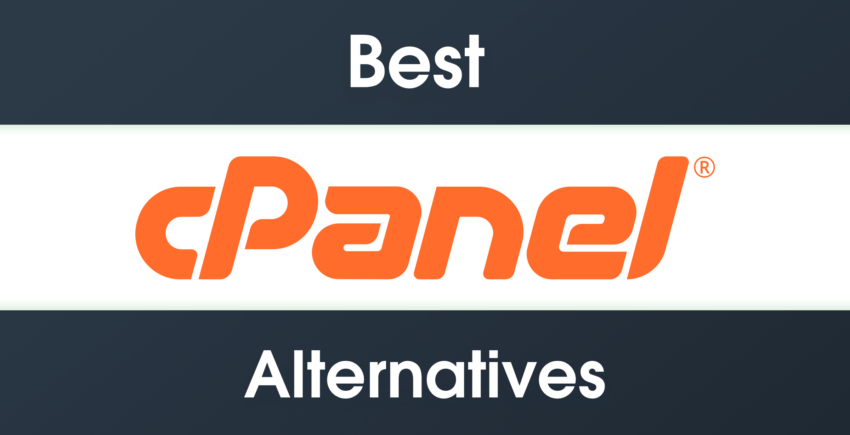Inside this Article
It’s a Tie for Basic Features, but Plesk Offers More Advanced IntegrationsPlesk Is Prettier, Sure, but Does That Matter?cPanel Is for Linux Only, and Not Even for All DistributionsPlesk Offers 24/7/365 Phone Support, While cPanel Charges ExtraPlesk Is Cheaper, but the Future Is UnclearThey’re Two Great Options, but I’m Going with cPanel
It’s a Tie for Basic Features, but Plesk Offers More Advanced Integrations
When I say basic features, I mean the ones that make up the backbone of your server and your account. These include creating FTP accounts and assigning permissions, configuring the Domain Name System (DNS), setting up email addresses and redirects, and the like. With both Plesk and cPanel, you’re going to get these features, and there’s practically no difference in the way it’s done between them. If you’re looking to install WordPress or some other popular content management system (CMS), you can also expect it to be a one-click process with both. The situation is a bit different when considering advanced integrations. Docker, for example, is a robust service used to manage application development. Plesk lets you integrate it, and other services, through the same interface – just like the basic features. With cPanel, on the other hand, you’ll have to go full geek mode and enter the command line. If you’re comfortable using the command line, you’ll find cPanel does enable you to integrate mostly the same features as Plesk. Personally, I’d rather avoid it. Moreover, I think that it’s fair to say that if it isn’t part of the interface – it can’t really be considered a feature. Advanced integrations give Plesk the edge and make it our winner here. If you aren’t interested in these advanced integrations, consider it a tie.Plesk Is Prettier, Sure, but Does That Matter?
Ask around the web and you’ll probably hear that Plesk is a better-designed panel, at least in the graphic sense. The colors are prettier, everything is arranged nicely, something like that. I agree with them. I also think panels shouldn’t be judged based on “pretty.” While it may not look as slick and modern, cPanel is easy to use. If I had to summarize the difference, I’d say it will take you 10–20 minutes to familiarize yourself with Plesk, but a whole 30–40 minutes to figure out cPanel. In the long run, it doesn’t matter. What does matter is understanding how each panel lets you manage the actual server. Server management includes setting up multiple hosting instances on your virtual private server (VPS) or dedicated hardware, or configuring a reseller service. With Plesk, it’s done from the exact same panel as all other features: just click the icon and add however many parallel Plesk installs you want. With cPanel, server management is done through Web Host Manager (WHM). cPanel and WHM go together, with cPanel being the user side of things and WHM being the side for managing servers. You have to log in separately, depending on the part you want to manage. So which option is better? Separating the server- and user-side, or grouping them together? Personally, I vote for separation of powers. Putting both in the same panel is sure to cause trouble, as in when you accidentally make a server-wide change. That’s why the surprising winner in ease of use is actually cPanel.cPanel Is for Linux Only, and Not Even for All Distributions
On to operating system (OS) support. This part is pretty black and white, as each panel was developed and designed to support certain OS and not others. cPanel is available for Linux only, and not on all distributions. The only supported ones are CentOS, CloudLinux, Amazon Linux, and Red Hat Enterprise Linux. On the other hand, you can install Plesk on all of those Linux distributions (and on a few more), plus – most important – on Windows servers. Basically, cPanel is a Linux-only option, while Plesk supports almost every hosting OS currently available. In terms of Windows panels, there really aren’t any other options except for some indie panels. Plesk has a complete monopoly in the Windows Server market. Now, it’s important to realize that this may not matter for you. The only reason to ever use Windows hosting is that you’re developing your project on one of Microsoft’s platforms – .NET, MSSQL, or some older technology. None of this is needed for running WordPress or a successful reseller business. Still, Plesk takes the win here. No matter what OS you’re going to use, rest assured Plesk will run on it.Plesk Offers 24/7/365 Phone Support, While cPanel Charges Extra
Wait, control panels have support representatives? Yes, yes they do. You’ll probably never contact them if you’re on a shared, managed VPS or managed dedicated server, but it’s a whole different story if you choose unmanaged hosting. Unmanaged hosting, whether VPS or dedicated, basically means you’re on your own. Your website hosting company will provide you with the server and guarantee its peak performance (hopefully), but it’s your job to configure, set up, and install everything. When you’re looking to add a specific integration with an outside service, or find that something isn’t working the way you expected, these are the guys you call. I’ve chatted with representatives with both companies, and I’m happy to say they’re all real pros. This is not some outsourced service, working off answer sheets. Call cPanel or Plesk and you’re guaranteed to speak with someone who understands the platform on the deepest level. The difference between the two is that with any Plesk account, you get unlimited 24/7/365 access to phone support. cPanel provides a fantastic, extremely detailed knowledge base, but for dedicated phone support, you’re going to shell out over $60 per ticket. Dedicated phone support, around the clock, makes Plesk our winner.Plesk Is Cheaper, but the Future Is Unclear
When you buy a VPS or a dedicated server, you typically receive the hardware without any pre-installed content. This implies that you’ll have a robust computer designated for your use, but it will lack any installed software. You will need to make a separate payment for a hosting control panel, which is available as an optional add-on. If your needs are simpler, and you’re sticking with shared hosting plans, don’t think you’re getting free Plesk or free cPanel hosting. The company that’s selling you the hosting still needs to buy the control panel licenses. If something is more expensive for them, then, through the magic of the modern economy, it will become more expensive for you. So how do the actual prices compare? With the current pricing structure, Plesk is cheaper, but don’t forget to read the fine print for your license. Prices for both Plesk and cPanel can go up fast after you exceed 100 instances per server – something to look out for if you’re a reseller. But wait, this isn’t the end of the story. You might be thinking that Plesk vs. cPanel is a winner-takes-all competition, but both panels have been owned by the same company – Oakley Capital – since January 2019. Knowing that both panels play for the same team, it’s pretty hard to estimate what’s going to happen in the future. My guess is that the panels will trade places, with occasional price hikes balancing the difference. Tread carefully, and keep comparing! The winner here is Plesk, due to the fact that it’s currently cheaper. It might not stay this way.They’re Two Great Options, but I’m Going with cPanel
Out of five categories, we had one tie, one cPanel win, and three Plesk wins. That makes Plesk the obvious winner, right? Well, not for me it doesn’t! Plesk wins when it comes to flexibility, rare use cases, and general prettiness. Thing is, cPanel is still the gold standard, and it powers way more websites. It has an active user community and tutorials to spare, and I’ve been with it for as long as I can remember. Because some of my favorite hosts, like InterServer and Liquid Web, provide fantastic cPanel hosting – the choice becomes even easier. I can’t blame anybody for going with Plesk, but if you’re looking for a sturdy, reliable control panel for Linux, my personal preference is cPanel.cPanel
Plesk
Features
All basic management features, plus backend ways to integrate services through the command line
All basic management features, plus advanced services already integrated into the panel
Ease of Use
Less pretty, separated into user-side management and server-side management
Modern design, user and server management are done within the same dashboard
Operating Systems Supported
CentOS, CloudLinux, Amazon Linux, and Red Hat Enterprise Linux
All OS supported by cPanel, plus Debian and Ubuntu distributions, and Windows Server 2008–2016
Support Service
Dedicated phone support per incident available for purchase
24/7/365 phone support included
Price
More expensive
Currently cheaper











![8 Best Enterprise WordPress Hosting (Scalable & Reliable) [2025]](https://dt2sdf0db8zob.cloudfront.net/wp-content/uploads/2024/11/Best-Enterprise-WordPress-Hosting-1.png)
![8 Best Enterprise WordPress Hosting (Scalable & Reliable) [2025]](https://dt2sdf0db8zob.cloudfront.net/wp-content/uploads/2023/05/Caitlin-Greyling-150x150.jpg)




